Every journey begins with a single step
Published on March 14th, 2022
When The Ocean Race 2022-23 gets underway on January 15, it will be the 14th edition of this crewed, multi-stage around the world race. With teams racing in either the foiling IMOCAs or one-design VO65s, they will contribute to the race history which began fifty years ago.
On September 8, 1973, nineteen sailboats from seven nations, a third of which were French, set sail from Portsmouth and the green waters of the Solent bound for South Africa. Not only was the atmosphere imbued with the inherent stress of any race start, but also a hefty dose of the unknown as the sailors had to negotiate a 27,000-mile sea passage, punctuated by the Roaring Forties and the Furious Fifties in the Indian and then the Pacific Ocean.
According to the book Sailing Legends, by Bob Fisher and Barry Pickthall, published on the fortieth anniversary of the race, the exploits of British solo circumnavigators Francis Chichester and Alex Rose in the 1960s led to the competition sponsored by the Sunday Times newspaper, the Golden Globe, which was not strictly a race but an opportunity for the first non-stop solo circumnavigation.
It was a challenge successfully completed by Robin Knox-Johnston, the only finisher, in 313 days. Chichester had taken up his challenge after winning the first Observer Singlehanded Transatlantic Race (OSTAR), the race itself was inspired by Blondie Hasler in 1960, and run subsequently every four years from Plymouth UK to Newport, Rhode Island.
“But a void still existed, one that sailing publisher Anthony Churchilland publicist Guy Pearse sought to fill. They unsuccessfully proposed the idea of a four-leg race around the world before handing the idea to the Royal Naval Sailing Association.
The RNSAS had already been approached by the Whitbread brewery, with the offer of sponsorship for a major regatta and shortly thereafter Admiral Otto Steiner met with Sam Whitbread to draw up the initial plans for the circumnavigation.”
Known as the Whitbread Round the World Race this first marathon around the planet comprised four long legs from Portsmouth and back via Cape Town, Sydney and Rio. A certain black boat did not go unnoticed dockside. Pen Duick VI, a 22-metre ketch, was specially designed for the race by André Mauric with titanium components.
The yacht was skippered by Eric Tabarly, who was accompanied by a young and talented crew whose names would soon be familiar to many – Olivier de Kersauson, Philippe Poupon and Marc Pajot, Gerard Petipas… The majority of the yachts were slow and heavy, loaded to the gunwales with tins of food and jerrycans of water.
Back in 1973, freeze-dried food and watermakers were not available on boats, but they did boast soft berths, back-up heating to try to dry vinyl oilskins from the fishing industry and even slippers. Given the unreliability of the SSB communications, it was considered good form to have both a doctor on board – the future explorer Jean-Louis Etienne on Pen Duick for example – and a cook, who floated between watches and worked at the home-style galley stove.
The British press promises an epic head-to-head battle between Eric Tabarly and Chay Blyth on Great Britain II. Tabarly had become headline news when he took victory in the 1964 OSTAR, whilst former Paratrooper Blyth had won renown after setting a single-handed round-the-world record against the prevailing winds in a time of 292 days in 1971.
The two sailors were clearly in it to win it. Recruited by Blyth, his crew were sturdy chaps but hardly sailors, and they complained of having to survive solely on stodgy curry-based meals. It was borderline mutiny. Upon making landfall in South Africa, Blyth admitted that “even parachutists are human beings…”, which provides some insight into the atmosphere that had developed on board.
It was a very different scenario aboard Sayula II, a Swan 65, designed by the prestigious American firm Sparkman & Stephens, built in Finland and considered back then to be the Rolls Royce of racer-cruisers. Mexican millionaire Ramon Carlin had it all figured out. He enlisted his son, an amateur yachtsman, but also some brilliant sailors. Whilst the youngsters got on with the sailing on deck, the skipper and his guests made the most of it.
“We have alcohol aboard and we sometimes have a drink together after dinner or at the end of the watch when we’re soaked and chilled to the bone,” explained the bon viveur.
Aboard Pen Duick VI, though, there’s a guitar, songbooks and Châteauneuf du Pape – Tabarly’s favourite wine – the accommodation is much less cosy, the crew opting to push the boat hard. The on board footage shows the off-watch crew bounding up on deck in their underpants with no harnesses on to help douse the massive spinnaker during a broach in a fierce squall, the boat rolling from side to side. It’s a miracle that there aren’t any casualties.
The race favourite will lose all hope of securing the win when the mast breaks and a new one had to be stepped in South Africa. This was another crew who spent more time using their toolbox than racing. On the British-flagged boat, a 25-year-old blond-haired New Zealander is competing in the first of his five consecutive Whitbreads.
“We’ve never sailed on this boat before and the race start heralds our first ever sea passage on her!” wrote Blake in his logbook. “We finish off the interior accommodation in the Solent. Fortunately, the weather’s fine…
“However, we fail to check that the heads are disconnected and after a week at sea, we realize that everything’s draining into the bilge where the tinned food is stored. In the panic of the start, we’ve stowed the tins without referencing them and now the labels have come off so when we open one it’s always a surprise!”
Following a month at sea, Sayula II takes the win on corrected time ahead of the comfortable Nicholson 55 named Adventure, and Grand Louis skippered by Frenchman André Viant. Tragically, three souls are lost at sea, including Frenchman Dominique Guillet, co-skipper of 33 Export, and five boats fail to finish. Sayula II would ultimately claim the overall race title.
The race is merciless and the skipper of the Polish boat Otago, a good seaman but a registered amateur, says out loud what a lot of people are thinking: “It’s really tough to live in such a limited space in very close quarters. Even rats couldn’t live on top of one another like that without quarrelling from time to time!”
Listening to Philippe Facque, today the CEO of the CDK Technologies yard, and crew for André Viant in 1973, his thoughts go to the challenge of the upcoming race. With his yard having built countless IMOCA yachts, he remains in awe of how these foilers outperform the 60-foot ORMA trimarans from thirty years ago.
“These boats are fabulous, but with a crew of five in the Southern Ocean, it’s bound to be full-on and physically demanding. These carbon hulls are incredible echo chambers. At the same time though, racing has become so much more professional in the past fifty years and today’s sailors are meticulously prepared and even ‘tougher’ than we were.
“I sometimes wonder whether I’d enjoy a crewed round-the-world race on these extraordinary machines if I were their age today (he’s now 70). I think I would… They go three times faster, they certainly do less cooking aboard than we did, but they get to experience what is an exceptional, unique and quite rare adventure.”
Editor’s note: This story, produced by The Ocean Race and the IMOCA Class, was updated March 17, 2022.
The Ocean Race 2022-23 Race Schedule:
To be confirmed – Prologue Race(s): September to December 2022
Alicante, Spain – Leg 1 start: January 15, 2023
Cabo Verde – ETA: January 22; Leg 2 start: January 25
Cape Town, South Africa – ETA: February 9; Leg 3 start: February 26 or 27 (TBC)
Itajaí, Brazil – ETA: April 1; Leg 4 start: April 23
Newport, RI, USA – ETA: May 10; Leg 5 start: May 21
Aarhus, Denmark – ETA: May 30; Leg 6 start: June 8
Kiel, Germany (Fly-By) – June 9
The Hague, The Netherlands – ETA: June 11; Leg 7 start: June 15
Genova, Italy – The Grand Finale – ETA: June 25, 2023; Final In-Port Race: July 1, 2023
Race details – Route – Teams – Facebook
The Ocean Race (formerly Volvo Ocean Race and Whitbread Round the World Race) will be raced in two classes of boats: the high-performance, foiling, IMOCA 60 class and the one-design VO65 class which has been used for the last two editions of the race. Entries in the IMOCA 60 class will compete for The Ocean Race trophy, while those racing the VO65s will chase the Ocean Challenge Trophy. The 14th edition was originally planned for 2021-22 but was postponed one year due to the pandemic.
Source: IMOCA


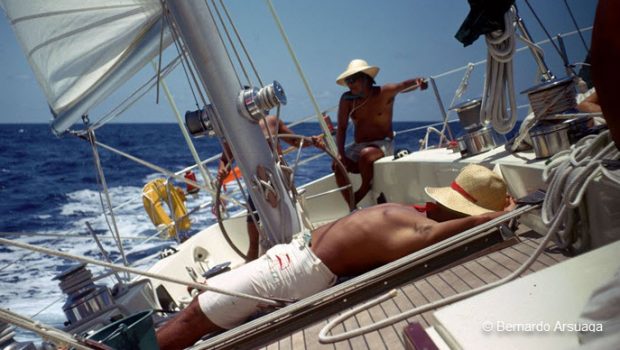


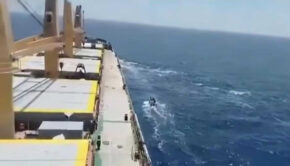
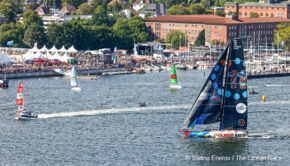
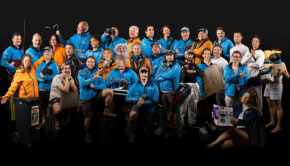
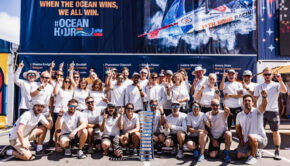
 We’ll keep your information safe.
We’ll keep your information safe.